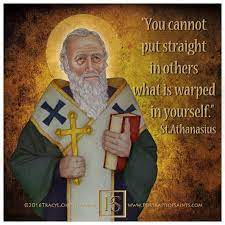A daily study of the Network’s diverse faiths

Great and Holy Pascha (Easter Sunday, Easter Day). Eastern Orthodox Christian Feast of the Resurrection of Jesus Christ, the greatest of all Holy Days and of all the feasts of the Orthodox Church, not counted among the Twelve Great Feasts as it is considered by itself as the Feast of Feasts. There is no prescribed liturgy on Sunday morning, everything for the feast having been celebrated during the All-Night Vigil that finishes at 3:00 or 4:00 am, when hardboiled eggs that have been dyed red to symbolise the blood of Christ are blessed and usually distributed to the people for the breaking of the Great Lenten fast with baskets of food blessed with holy water. The Easter egg was an important symbol connected with the spring fertility rituals in many early civilisations. Another important Easter symbol is the lamb, often depicted with a banner that bears a cross and known as the Agnus Dei (Lamb of God). Lamb and tsoureki Easter bread are popular in UK Greek and Romanian Orthodox communities for the feast that usually starts when arriving home after the midnight liturgy with the announcement that Christ is Risen. On Easter Sunday afternoon there is a special Paschal Vespers at which the John’s Gospel narrative of Jesus Appearing to His Disciples is chanted in many languages (Vespers of Love). The Artos, a large loaf of leavened bread that represents the Resurrected Christ, blessed and set next to the Icon of the Resurrection to be venerated by the faithful, is carried in procession throughout Bright Week, which is fast-free even on Wednesday and Friday and is considered to be one continuous day until the Ninth Hour on Bright Saturday. Image: greekcitytimes.com.

St Athanasius, Bishop of Alexandria (c297-373). Lutheran Commemoration of death and Coptic and Western Christianity Feast Day for wealthy Alexandrian Nicene Christian theologian, Father and Doctor of the Church, attendee at the First Council of Nicaea, chief defender of Trinitarianism against Arianism, noted 4th Century Egyptian leader and for 48 years 20th Bishop (Patriarch) of Alexandria. In the Eastern Orthodox Church, Athanasius was the 1st person to identify the same 27 books of the New Testament that are in use today. He spent periods in exile and, when he returned to Alexandria in 366, spent his final years repairing the damage done in the years of violence and dissent during his exile, before consecrating his successor and dying peacefully in his bed surrounded by his clergy and faithful supporters. Athanasius was originally buried in Alexandria but his remains were later transferred to the Chiesa di San Zaccaria in Venice. In Coptic literature, Athanasius is the first Patriarch of Alexandria to use Coptic as well as Greek in his writings. His biography of St Anthony the Great, entitled Life of Antony (Βίος καὶ Πολιτεία Πατρὸς Ἀντωνίου, Vita Antonii), became his most widely-read work and was translated into several languages. Venerated in Eastern and Oriental Orthodox and Catholic Churches, Anglican Communion, Lutheranism. Shrine: Saint Mark Coptic Orthodox Cathedral, Cairo. Byzantine Christianity Feast Day 18 January. Image: pinterest.com.

Our Lady of Oviedo. Our Lady was venerated at Covadonga, in a cave 80 km to the east of Oviedo, when the Visigoths defeated by the Moors advancing from Gibraltar in 711, placed themselves under her protection as the Patroness of their army and of all Spain, and repelled the Moors to begin of the 800-year reconquest of Spain. Around the middle of the 8th Century, a chapel was built along with the Benedictine Monastery of Holy Mary and a later collegiate church destroyed by fire in 1777 and rebuilt. In the cave, there is still the chapel of Santa Maria with the present 1908 statue Our Lady of Covadonga (Oviedo). The Cathedral of San Salvador in Oviedo (Sancta Ovetensis) was founded in 781 and its Arca Santa (Holy Chest), venerated since apostolic times and filled with priceless relics including the Sudarium that covered the face of Christ after the crucifixion, was saved from the 614 Persian conquest of Jerusalem and the 641 Muslin sacking of Alexandria before it arrived in Toledo in 657, to be moved in 718 to northern Spain to escape the Moors. Image: fromoceantoocean.org.
